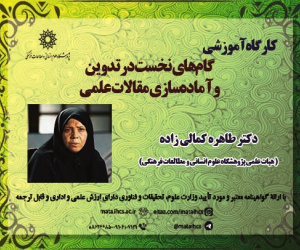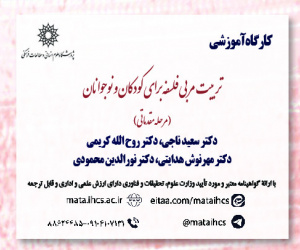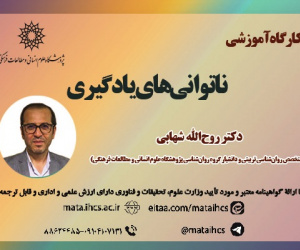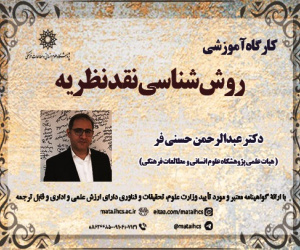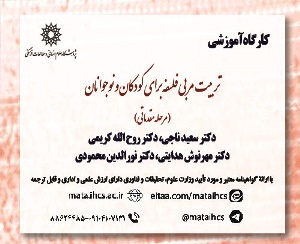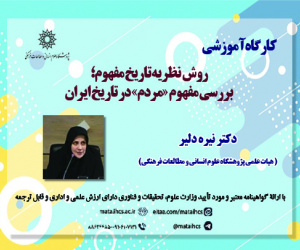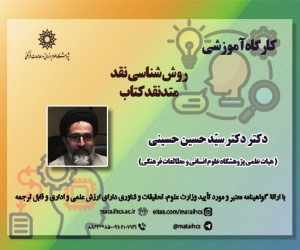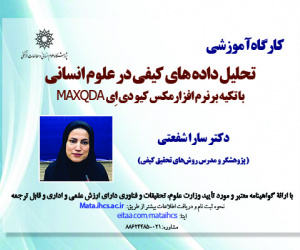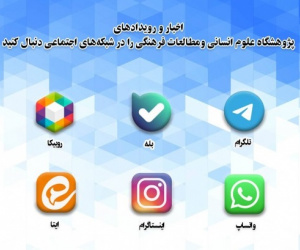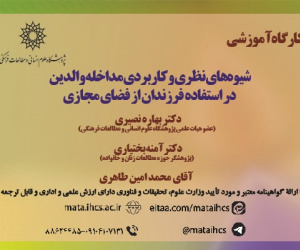طراحی الگوی شایستگی های نیروی کار صنایع تولیدی در انقلاب صنعتی چهارم (مقاله علمی وزارت علوم)
درجه علمی: نشریه علمی (وزارت علوم)
آرشیو
چکیده
مقدمه و اهداف: با وجود تحولات ناشی از فناوری ها در فرآیندهای کاری، دگرگونی دیجیتال مستلزم بهره گیری از مهارت های انسانی برای تضمین قابلیت استفاده و کارایی فناوری های دیجیتال است. در این راستا، بازار کار نیز نیازمند انطباق با تقاضاهای جدید مرتبط با این تغییرات است. انقلاب صنعتی چهارم تأثیر چشمگیری بر نیروی کار داشته و موجب دگرگونی های اساسی در پروفایل های شغلی شده است. بر همین اساس، این پژوهش با هدف طراحی الگوی شایستگی های نیروی کار در انقلاب صنعتی چهارم و آزمون آن در شرکت های تولیدی بزرگ استان آذربایجان شرقی انجام شده است. روش ها: پژوهش حاضر به لحاظ هدف، در حوزه پژوهش های کاربردی-توسعه ای قراردارد و روش تحقیق آمیخته اکتشافی (کیفی- کمی) بوده است که در بخش کیفی بر اساس روش داده بنیاد و استفاده از نرم افزار NVivo، سازه و اجزاء الگوی شایستگی های نیروی کار در صنایع تولیدی مشخص شده است. همچنین در بخش کمی از معادلات ساختاری استفاده شده است. جامعه آماری در بخش کیفی، خبرگان دانشگاهی و مدیران صنعتی بودند و در بخش کمی، مدیران بخش صنعتی که تعداد ایشان 302 نفر بوده است، نمونه گیری در بخش کیفی به صورت اشباع نظری انجام گرفته و هفده فرد خبره در مصاحبه ها شرکت نموده اند. در بخش کمی با استفاده از قاعده سرانگشتی 90 نفر به عنوان نمونه انتخاب شدند، قلمرو مکانی تحقیق صنایع تولیدی بزرگ استان آذربایجان شرقی و قلمرو زمانی آن سال 1401 بوده است. ابزار پژوهش در بخش کیفی مصاحبه نیمه ساختاریافته و در بخش کمی پرسشنامه بر اساس یافته های بخش کیفی بوده و برای تجزیه و تحلیل یافته های کیفی از روش کدگذاری باز، محوری و انتخابی و در بخش کمی از معادلات ساختاری استفاده شده است. یافته ها: یافته های این پژوهش نشان می دهند که شرایط علی، زمینه ای و مداخله ای به طور مستقیم بر طراحی الگوی شایستگی های نیروی کار در انقلاب صنعتی چهارم تأثیرگذار هستند. در شرایط علی، عواملی مانند پویایی محیط فناوری و نیاز به مهارت های جدید، نیروی کار را به سمت یادگیری و به روزرسانی مداوم مهارت ها سوق می دهند. از سوی دیگر، شرایط زمینه ای شامل پشتیبانی فرهنگی و سرمایه گذاری در زیرساخت ها به تقویت فرآیند یادگیری و توسعه شایستگی ها کمک می کند. همچنین، مداخلات مدیریتی و برنامه های آموزشی به عنوان شرایط مداخله ای، می توانند به افزایش توانمندی های نیروی کار در زمینه های فنی و اجتماعی کمک کنند. این شرایط به واسطه ارتقاء عملکرد سازمانی و بهبود کیفیت کار، به تحقق اهداف سازمانی و افزایش رضایت شغلی منجر می شوند. در نهایت، این یافته ها بر لزوم اتخاذ راهکارهای مناسب برای بهبود مستمر شایستگی های نیروی کار تأکید می کنند تا سازمان ها بتوانند در دنیای رقابتی امروز به موفقیت دست یابند، نتایج حاصل از بخش کمی پژوهش بیانگر آن بود که شرایط علی بر مقوله اصلی و مقوله اصلی بر راهبردها و راهبردها بر پیامدها تأثیر مثبت و معناداری دارد. شرایط مداخله گر بر راهبردها و درنهایت شرایط زمینه ای بر راهبردها تأثیر مثبت و معناداری دارد. نتیجه گیری: نتایج بدست آمده از این پژوهش نشان می دهند که برای طراحی الگوی شایستگی نیروی کار در دوران انقلاب صنعتی چهارم، نیاز به شناسایی مهارت های کلیدی است که شامل تسلط بر فناوری های نوین، مهارت های اجتماعی و همکاری، سازگاری و انعطاف پذیری، و تفکر انتقادی و خلاق می شود. این شایستگی ها در افزایش توانمندی های نیروی کار و پاسخ گویی به چالش های جدید محیط کار حیاتی هستند. همچنین، پژوهش به ضرورت زیرساخت های حمایتی فرهنگی و دولتی برای پیاده سازی موفق این الگو اشاره دارد و تأکید می کند که آموزش های منسجم و برنامه های توسعه ای باید برای ارتقاء مهارت های کارمندان به کار گرفته شوند. در نهایت، این الگوی شایستگی به سازمان ها کمک می کند تا بهره وری را افزایش دهند، کیفیت کار را بهبود بخشند و رضایت شغلی و نگهداری استعدادها را تقویت کنند.Designing the Competency Model of the Workforce in Manufacturing Industries During the Fourth Industrial Revolution
Introduction: Despite the technological revolution transforming work processes, digital transformation requires inherent human skills to ensure the usability and efficiency of digital technologies. Accordingly, the labor market must adapt to these related demands. The Fourth Industrial Revolution has significantly impacted the workforce, leading to major shifts in job profiles. The aim of this research is to design a competency model for the workforce during the Fourth Industrial Revolution and to test this model in large manufacturing companies in East Azerbaijan Province.
Methods: This study is classified as applied-developmental research and employs an exploratory mixed-method approach (qualitative-quantitative). In the qualitative phase, the grounded theory method and NVivo software were utilized to determine the structure and components of the workforce competency model in manufacturing industries. In the quantitative phase, structural equation modeling was employed. The statistical population in the qualitative phase included academic experts and industrial managers, while in the quantitative phase, industrial managers formed the population (302 individuals). The qualitative sample was selected based on theoretical saturation, resulting in 17 expert participants for interviews. In the quantitative phase, 90 managers were selected using the rule of thumb sampling method. The study's spatial domain included large manufacturing industries in East Azerbaijan Province, and the temporal domain was the year 1401 (2022-2023). Research tools included semi-structured interviews for the qualitative phase and questionnaires based on qualitative findings for the quantitative phase. Data analysis in the qualitative phase was conducted using open, axial, and selective coding, while structural equation modeling was employed for quantitative analysis.
Results and discussion: The findings indicate that causal, contextual, and intervention conditions directly influence the design of a workforce competency model for the Fourth Industrial Revolution. Causal conditions, such as the dynamic technological environment and the need for new skills, push the workforce towards continuous learning and skill updates. Contextual conditions, including cultural support and infrastructure investment, strengthen learning processes and competency development. Intervention conditions, such as managerial interventions and training programs, enhance workforce capabilities in technical and social domains. These factors contribute to achieving organizational goals and improving job satisfaction by enhancing organizational performance and work quality. The findings underscore the necessity of adopting appropriate strategies to continuously improve workforce competencies, enabling organizations to succeed in today’s competitive environment.
Conclusion: The research results highlight the importance of identifying key skills for designing a workforce competency model in the Fourth Industrial Revolution. These skills include mastery of new technologies, social skills and collaboration, adaptability and flexibility, and critical and creative thinking. These competencies are crucial for strengthening workforce capabilities and addressing new workplace challenges. Furthermore, the study emphasizes the need for supportive cultural and governmental infrastructures to facilitate successful implementation. Consistent training and development programs should be employed to enhance employee skills. Ultimately, this competency model supports organizations in increasing productivity, improving work quality, and enhancing job satisfaction and talent retention.

